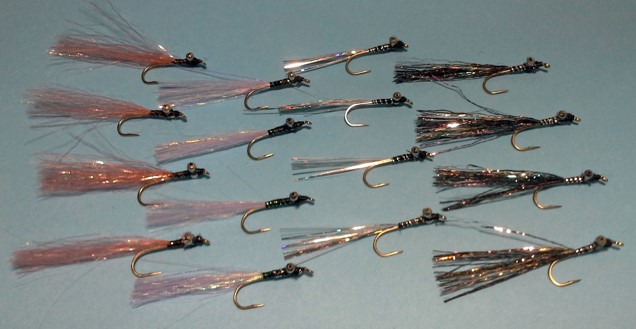Paul writes, “I was the guest tier on the BT’s Fly Night Zoom meeting on December 8th – Aussie Flies that work.“
The Australian wood duck, maned duck or maned goose (Chenonetta jubata) is a dabbling duck found throughout much of Australia. A freshwater duck which typically feeds in shallow water by dabbling and upending, as opposed to a diving duck. It is called a wood duck mainly because it nests in trees.
Materials
- Hook: Size 14, barbless jig
- Thread: Grey sheer, 14/0
- Bead: Black, add wire if glass
- Tail: Grey wood duck wing
- Rib: Silver (curtain fringe)
- Body: Aussie possum dubbing
- Thorax: None (Aussie possum lump)
- Hackle: Wood duck breast feather
- Head: Thread
Tying Steps
- Thread the black bead onto the hook.
- Wrap on wire if using a glass bead.
- Cover the hook with thread.
- Tie in the silver ribbing.
- Tie in the tail.
- Loose dub the possum body.
- Reverse rib the body.
- Dub a small lump of possum.
- Tie in and wrap soft hackle Whip finish and blow dry “style”.
Paul’s Soft Hackle Fly Tying SOP
My only tying threads for any fly is Gordon Griffith’s Sheer 14/0, woolly nylon, and sometimes invisible sewing thread.
I start my thread at the three quarter point and use that as a guide.
Tail length – measure the tail the length of the hook shank, trimmed and tied in at the halfway point.
Ribbing material is tied in at the starting point and back to the tail. Reverse wrap the ribbing.
Tie the hackle by the tips. Fold back and wrap around the hook. Tie it off, forcing the fibres back.
The secret to great soft hackle flies is the hot blast of hair by your “fly-tying hair dyer”. This will train all the fibres to go in the right direction.





